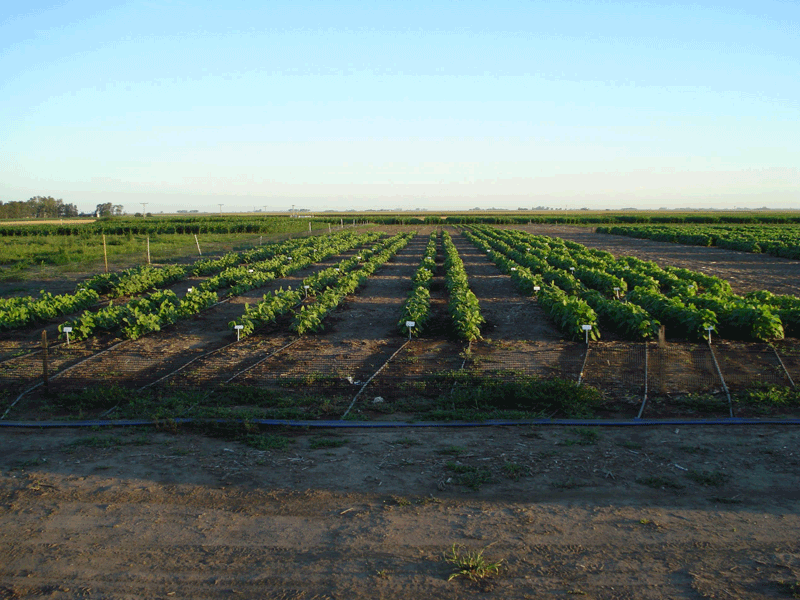Applied research in Argentina
THE IMPORTANT ROLE OF TECHNOLOGY
WHEN ARGENTINE FARMERS analyzed the global market for oilseeds, soybeans clearly appealed to them. Part of the allure was the growing hunger for soybeans in China. Another was the higher relative yield stability of soybeans compared to other “summer” crops there. Over the past 15 years, Argentina has risen to become the third-largest soybean producing country in the world. Farmers dedicate 18.5-million hectares to this crop, producing a harvest that exceeds 45 million tonnes.
PHOTO: GROWERS IN ARGENTINA DECIDE WHICH VARIETY TO PLANT BASED ON ROBUST PERFORMANCE DATA.

And just like Ontario’s soybean industry began growing through the 1980s and 1990s as a result of research — most of it funded by the provincial agriculture ministry at the University of Guelph, carried out by plant breeding giants such as Wally Beversdorf, Istvan Rajcan, Peter Pauls and the late Jack Tanner and Gary Ablett — so does the Argentine soybean sector count on applied research to keep pace.
“Across Argentina, soybeans are grown in a wide array of environments characterized by different soil types, rainfall and latitudinal location,” says Juan Loreti, soybean breeding project lead for Syngenta, Latin America South. “Consequently, the seed industry must provide growers with soybean varieties ranging from Maturity Group III to VIII, adapted to different agro-ecological environments.”
In early September, Argentina hosted the first South American congress of the International Federation of Agricultural Journalists, exposing a breadth of farm writers to this country. Season-wise, Argentine farmers were just coming out of winter. A handful of participants were offered a tour of the Syngenta research station at Santa Isabel, about three hours from Buenos Aires, and they saw a prairie-flat countryside that was barren and bleak – not unlike farmers’ fields in most of Canada at the end of winter.
Some of the pasture land standing idle was in transition to soybeans. The zeal to produce more and more soybeans – which is encouraged by the cash-starved national government, which levies a significant export tax on soybeans – is driving beef production to new areas that have never been developed for pasture. Pasture research is underway thanks to a beef check-off, focused significantly on new pasture development and management. But it is in catch-up mode, given the race to increase soybean production.
And while Argentina’s quiet winter landscape dashed some first-time visitors’ dreamy visions of year-round soybeans in the country, it served as a reminder that farm management is as important to Argentine farmers as it is to Ontario farmers. Even when they are lucky enough to have the best growing conditions, record yields do not just happen. Technology is a vital part of their management.
EMBRACING TECHNOLOGY
They have certainly embraced it. Argentine farmers are the third biggest users of biotechnology in the world, behind the US and Brazil. Roundup Ready® soybeans had one of the highest adoption rates in the world here, with widespread acceptance since the late 1990s.
In late September, Argentina approved planting of the 29th GMO crop in the country. Biotechnology, pesticides, and stewardship collectively appear as a bundle along with precision agriculture, no till, and crop rotation as the national government’s four pillars for better agriculture in Argentina.
The reasons for the support of biotechnology are clear, says Gustavo Idigoras, former Argentine Ambassador for the European Union. He cites benefits such as reduced production costs, greater flexibility in land management, better yields and quality, and less insecticide applications as some of the reasons Argentine farmers support it.
But as in Ontario, what Loreti calls “the simplicity of the Roundup Ready technology package” led to a reduction in the diversity of modes of action used for weed control in Argentina. The result? Glyphosate resistant weeds.
WEED CONTROL
This has generated new challenges to researchers and growers, grappling with how to manage glyphosate resistant weeds, some of them with a history of resistance to other herbicide families (such as ALS). “One of the most important needs of Argentinean soybean growers is cost-effective, easy-to-use weed management practices and products,” says Loreti.
With this in mind, Syngenta will be offering growers a new weed control option based on herbicides with modes of action that Loreti says have not previously been used on soybeans. It is called MGI technology, an acronym for its active ingredients: mesotrione, glufosinate ammonium, and isoxaflutole. MGI technology will enable soybean growers to use two modes of action for weed management, delivering what Loreti calls best-in-class residual control and new options to effectively manage resistant weeds.
“MGI will enable more herbicide chemistry options in soybeans, bring proven residual control with excellent compatibility with other herbicide tolerance traits and other soybean herbicides, broad-sprectrum dicot and grass control – including control of resistant weed biotypes, and better and more sustainable weed management,” he says.
Loreti is confident MGI technology, together with soybean varieties carrying a Syngenta biotechnology event that gives resistance to the MGI herbicides, will help growers there control weeds more sustainably in the face of ever more herbicide tolerant weeds. Syngenta is expecting MGI technology will be available for Argentine farmers by the end of the decade. Syngenta, in partnership with Bayer CropScience, is also currently undergoing the regulatory review process for the use of this technology in the US and Canada, with approval expected for a launch of their products between 2015 and 2020.
INCREASING YIELDS
Another concern for Argentinean growers, particularly given the rise in production, is yield. They are focused on maximizing those yields on what Loreti calls a sustainable and stable basis. Consequently, he says, every year, more growers decide which variety to plant in each environment, based on robust performance data.
He says modern Argentine growers believe performance means proven yield potential, as well as stability, across several locations. To satisfy the needs of these growers, he says varieties must prove to have high yield potential, and resist stress such as drought and the most important soybean diseases — namely, stem canker and frogeye leaf spot.
To achieve that goal, the company is creating varieties with native traits that confer resistance to diseases and nematodes, combined with biotechnology-based traits that complete the risk management package with resistance to insects and herbicides.
“We’re integrating genetics and crop management tools to offer Argentinean soybean growers complete and sustainable options to obtain the maximum from their soybean crops in a stable way,” says Loreti.
And with maximum yields yet to be obtained, Argentina’s standing as a soybean powerhouse could rise even more. •

















